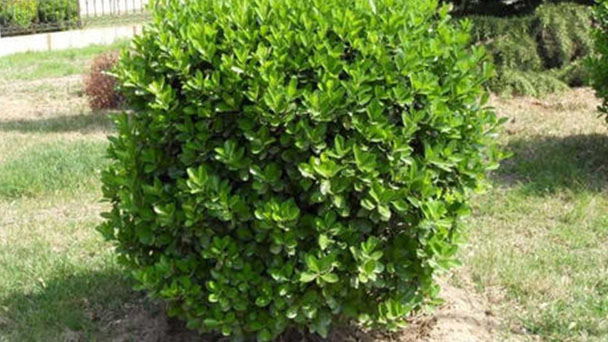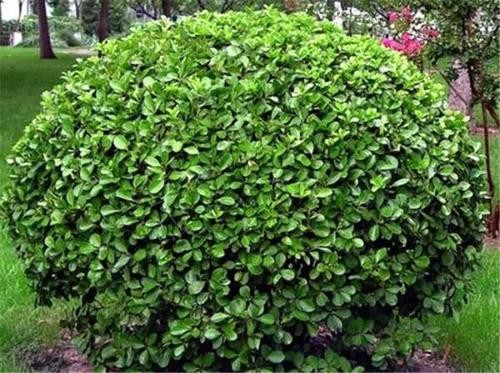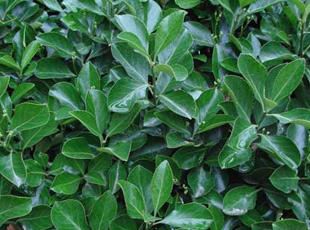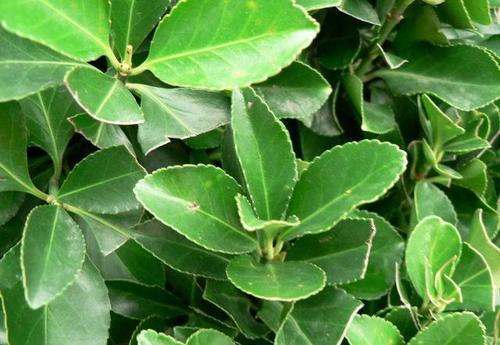How to grow and care for Euonymus japonicus
Written by Maggie
Jan 09 2021

At present, Euonymus japonicus has some distribution in many places in China. Euonymus japonicus is of high ornamental value. So how to grow and care for Euonymus japonicus? Let's look together.

How to grow Euonymus japonicus
Sewage sludge management of Euonymus japonicus
Euonymus japonicus likes a moist environment, after planting we should immediately pour water, the second day two water, the fifth day three water, three water after timely release soil moisture, and according to the weather conditions watering, in order to keep the soil moist and not water is appropriate. In high summer temperatures, it should be timely watering, and carries on the foliar spray. It is important to note the summer water only in the morning and evening temperature is low, water at high temperature is unfavorable, at noon in the summer after the rain, the water in time to eliminate, the water a long time can easily lead to root rot out from lack of oxygen, so that the plant deciduous or death.
Fully irrigate the antifreeze water from the end of October to the beginning of November before winter. In the middle of March, you should also fully irrigate the green water, which is very important for the growth of plants throughout the year, because the spring wind is strong and lasts for a long time, and lack of water will affect the germination of new leaves.
Euonymus japonicus likes fertilizer, so we should apply sufficient base fertilizer when planting, fertilizer to mature fertilizer, ring fertilizer or dried chicken manure is good, base fertilizer and planting soil fully mixed. If not mixed, the roots will be burned after planting. After normal management, nitrogen fertilizer was applied once a year after pruning in mid spring to make the plant flourish and luxuriant. Applying p and K compound fertilizer in early autumn can accelerate lignification of new branches in the same year, which is beneficial to plant safety over winter. When the plant growth is poor, can take the foliar spraying method to fertilize, commonly used 0.5% urea solution and 0.2% potassium dihydrogen phosphate solution, which can make the plant accelerate the growth.
Trim management of Euonymus japonicus
Seedling transplantation is usually carried out in spring from March to April. Small seedlings can be removed by bare roots while large seedlings need to be transplanted with earth balls. No special management is required. After pruning, the branches are easy to shoot, to maintain a certain tree shape.

How to care for Euonymus japonicus
First of all, we should pay attention to the effect of temperature on poplar seedlings. April is the late cold month, the temperature rises and falls, has a great impact on the growth of seedlings, especially the seedlings with weak resistance, once frostbite, then it is difficult to recover, more seriously may die. Therefore, nursery managers need to pay attention to the changes in the capital. When the temperature greatly reduces, it should be wrapped in a sealed film on the heat preservation, the greenhouses above can be according to the temperature changes in the range of appropriate increase straw curtain. After waiting for the sunny day, we should remove the straw curtain in time, increase the light, and improve the temperature inside the greenhouse. If at noon, according to real-time temperature, appropriate open the window, in order to enhance the air flow inside the greenhouse, lest the temperature is too high burn seedlings.
If conditions permit, plant ash can be covered in the roots of seedlings, which can not only absorb heat and increase temperature, but also provide potash fertilizer needed for growth of seedlings and promote growth of seedlings.
Secondly, we should pay attention to the influence of humidity in the nursery on the growth of seedlings. No matter what seedlings, wet damage is an important factor affecting their growth. If there is frequent rain and snow in spring or if the nursery is relatively low-lying, then it is easy to store water in the nursery. The water stored in the nursery will inevitably increase the moisture content in the soil. The higher the moisture content, the worse the permeability of the soil and the lower the temperature of the soil. When the temperature is not up to the growth requirement and the permeability is not good, the seedlings are easy to rot or die.In order to create a suitable environment for the growth of poplar, it is necessary to clean up the scattered soil in the nursery. If the terrain is low, then those shallow drainage ditches should be deepened. It is necessary to ensure that the depth of each drainage ditch is consistent, so as not to cause the growth of good and bad.
It should be noted that the soil inside can be kept a little higher and the soil at the edge a little lower, so that the water flowing in or stored in the soil can be discharged as soon as possible, so as to avoid the soil being blocked by rain and the roots of the seedlings can't breathe.
Finally, the prevention and treatment of pests and diseases, and the prevention of fertilizer. Pests and diseases are the natural enemies in the growth process of all seedlings. It must be prevented in advance, once found to be timely treatment. The other is fertilizer. In spring, large leaf boxwood fertilizer demand is not high. If there is a lack of nutrition, you can follow the principle of less fertilization.

Latest Updated
- Benefits of Bugleweed - 7 Science-backed Health Benefits
- Bugleweed Dangers & Side Effects - Is It Poisonous?
- How to Plant Evergreen Trees - What You Should Know
- When to Plant Evergreens - Grow Guide for Evergreen Trees
- 12 Wonderful Evergreen Shrubs for Your Garden
- 12 Popular Evergreen Plants with Pictures for Beginners
- When And How To Prune A Lilac Bush Like a Pro
- How to Grow & Care for Lilac Vine (Hardenbergia Violacea)
- Japanese Lilac Tree (Syringa Reticulata) Care & Propagation Guide
- Shumard Oak Pros and Cons - What to Know
Popular Articles
- Winter maintenance of Antirrhinum Majus
- How to Grow Terminalia Mantaly Tree
- How to Grow and Care for Crossostephium Chinense
- How to grow Antirrhinum Majus in spring
- Peristeria Elata (Dove Orchid) Profile: Info & Care Guide
- Underwatered Snake Plant (Sansevieria Trifasciata) - Signs And How To Fix
- How to Care for Brazilian Jasmine Plant (Mandevilla Sanderi)
- How to Grow & Care for Graptopetalum Purple Delight in Summer
- Rosa Chinensis (China Rose): Plant Growing & Care Tips
- How to Care for Baby Sun Rose (Aptenia Cordifolia)